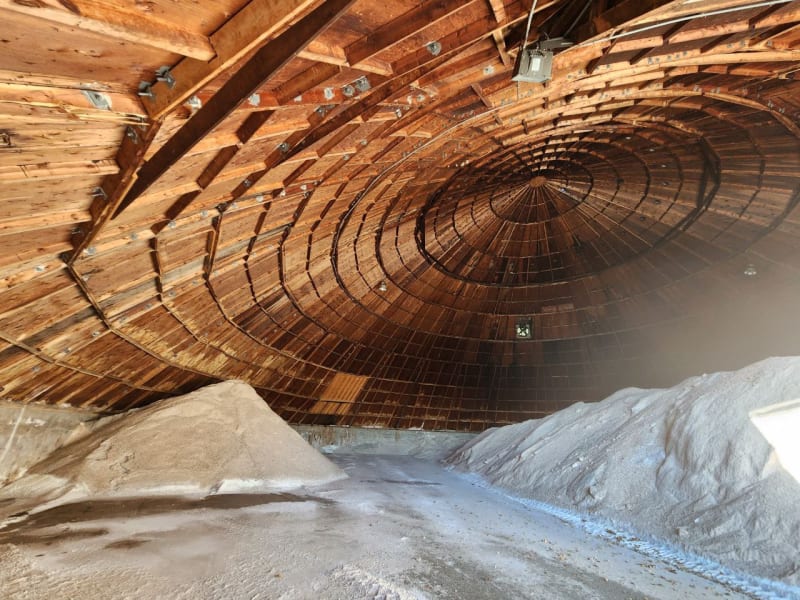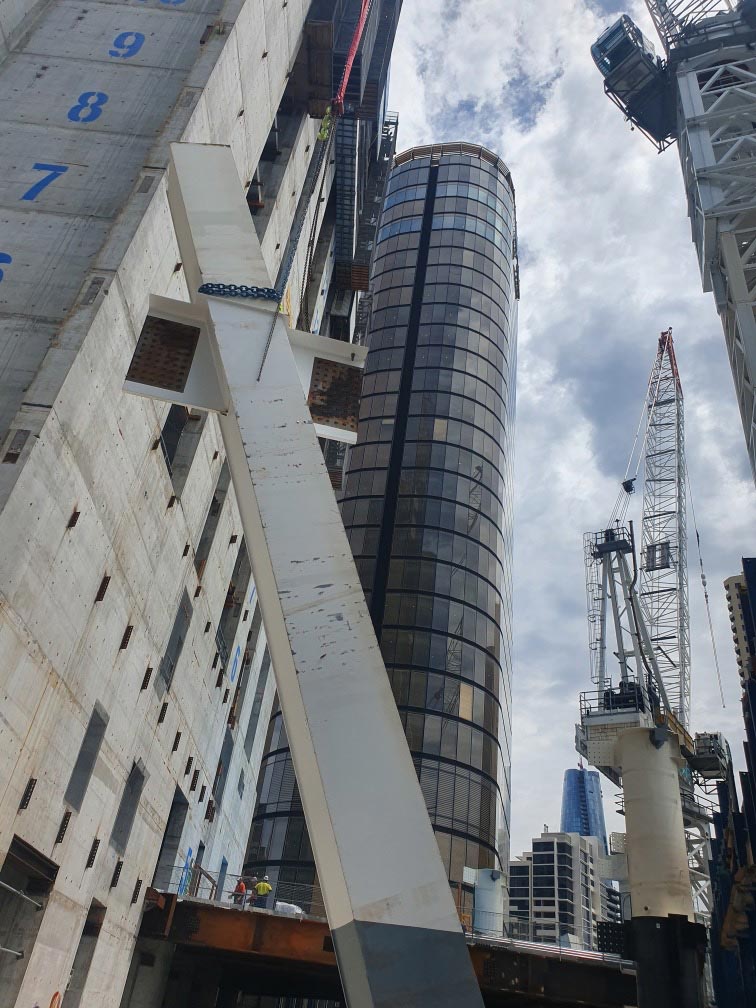Alright folks, let me break this down for you real quick. If you're here, you're probably scratching your head wondering what the heck "salt erection tip" is all about. Well, let me tell you, it's not as scandalous as it sounds. In construction and civil engineering, salt erection tips play a crucial role in enhancing the structural integrity of buildings, especially in areas prone to harsh weather conditions like freezing temperatures. This is where the magic happens, and today, we’re diving deep into the nitty-gritty of how to make your structures stand tall no matter what Mother Nature throws at them.
Now, before we get into the juicy details, let’s talk about why this matters. Imagine building a structure that crumbles under the weight of time or weather. That’s not just bad for business; it’s dangerous. Structural integrity is the backbone of any construction project, and understanding how to enhance it using effective strategies is key. Whether you're an engineer, a contractor, or just someone curious about how things are built to last, this article is for you.
So, buckle up, because we’re about to take you on a journey through the world of salt erection tips, structural integrity, and the strategies that make it all possible. Let’s get started, shall we?
Read also:Experience The Cultural Tapestry Of Pron India A Comprehensive Guide
Here's a quick table of contents to help you navigate:
- What is Salt Erection?
- Why Structural Integrity Matters
- Effective Strategies for Salt Erection
- The Biological Impact of Salt
- Environmental Considerations
- Cost Analysis and Budgeting
- Tools and Techniques for Implementation
- Maintenance Tips for Long-Term Success
- Real-World Case Studies
- Wrapping It All Up
What is Salt Erection?
Let's start with the basics. Salt erection refers to the process of applying salt-based compounds to enhance the strength and durability of structures. This is particularly important in regions where de-icing salts are used on roads and sidewalks during winter. Over time, these salts can seep into the foundation of buildings, affecting their structural integrity. But fear not, because there are ways to turn this potential problem into a solution.
Think of salt erection as a strategic move to fortify your building against the elements. It’s like giving your structure a shield against the harsh realities of nature. And hey, who doesn’t love a good shield, right?
How Does Salt Affect Structures?
Salt can cause a range of issues, from corrosion of metal reinforcements to the degradation of concrete. But with the right strategies in place, these effects can be mitigated. Here’s a quick list of how salt impacts structures:
- Corrosion of steel reinforcements
- Cracking and spalling of concrete
- Increased water absorption
- Weakened load-bearing capacity
Now that we’ve covered the basics, let’s dive into why structural integrity is such a big deal.
Why Structural Integrity Matters
Structural integrity is the backbone of any construction project. Without it, buildings wouldn’t last long. Think about it like this: if you’re building a house of cards, you want each card to be perfectly aligned and sturdy. The same goes for buildings. Every component must work together seamlessly to ensure the structure can withstand external forces.
Read also:Anjali Arora Viral Sensation Exploring The Impact Of Online Fame And Controversy
Here’s why structural integrity is so important:
- Ensures safety for occupants
- Reduces maintenance costs in the long run
- Increases the lifespan of the structure
- Complies with building codes and regulations
So, how do we enhance structural integrity using salt erection tips? Let’s find out.
Effective Strategies for Salt Erection
Now, here’s where the magic happens. There are several strategies you can employ to enhance the structural integrity of your buildings using salt erection tips. Let’s break them down one by one.
Strategy #1: Use High-Quality Materials
Starting with the right materials is key. Using high-quality concrete, steel, and other construction materials can significantly reduce the impact of salt on your structure. Think of it like building a car with premium parts—it’s going to last longer and perform better.
Strategy #2: Apply Protective Coatings
Protective coatings act as a barrier between the salt and the structure. These coatings can be applied to both the exterior and interior surfaces, providing an extra layer of defense against corrosion and degradation.
Strategy #3: Implement Proper Drainage Systems
Water and salt are a dangerous combination. Implementing proper drainage systems can help prevent water from pooling around the foundation, reducing the risk of salt infiltration.
These strategies, when combined, can create a robust defense system for your structure. But there’s more to consider, especially when it comes to the biological impact of salt.
The Biological Impact of Salt
Salt doesn’t just affect buildings; it can also impact the surrounding environment. Understanding its biological impact is crucial for sustainable construction practices. Here’s what you need to know:
- Salt can harm vegetation, leading to barren landscapes
- It can contaminate groundwater, affecting local ecosystems
- Excessive use of salt can disrupt the balance of natural habitats
By being mindful of these impacts, you can make more informed decisions about how and where to apply salt-based solutions.
Environmental Considerations
Speaking of the environment, let’s talk about how you can make your salt erection strategies more eco-friendly. Here are a few tips:
- Use environmentally friendly salt alternatives
- Implement green building practices
- Monitor and minimize salt runoff
Being environmentally conscious not only benefits the planet but also enhances your reputation as a responsible builder.
Cost Analysis and Budgeting
Let’s talk money. Enhancing structural integrity with salt erection tips doesn’t have to break the bank. By planning your budget carefully and prioritizing cost-effective solutions, you can achieve great results without overspending.
Here’s a quick breakdown of potential costs:
- Material costs: $X per square foot
- Coating application: $Y per square foot
- Drainage system installation: $Z per project
Remember, investing in quality upfront can save you a lot of money in the long run.
Tools and Techniques for Implementation
Now, let’s talk about the tools and techniques you’ll need to implement these strategies. From advanced software to traditional construction tools, here’s what you need:
Tool #1: Structural Analysis Software
Software like SAP2000 and ETABS can help you analyze the structural integrity of your designs before construction begins. This ensures that your strategies are effective from the get-go.
Tool #2: High-Pressure Water Jetting
This technique is great for cleaning and preparing surfaces for protective coatings. It’s like giving your structure a deep cleanse before applying its armor.
Maintenance Tips for Long-Term Success
Maintenance is key to ensuring the longevity of your structure. Here are a few tips to keep in mind:
- Regular inspections to identify potential issues early
- Timely repairs to prevent minor problems from escalating
- Annual cleaning and reapplication of protective coatings
By staying on top of maintenance, you can ensure your structure remains strong and durable for years to come.
Real-World Case Studies
Let’s look at some real-world examples of how these strategies have been successfully implemented:
Case Study #1: The Snowy Mountain Bridge
This bridge was built in a region with harsh winters. By using salt erection tips and protective coatings, the bridge has withstood decades of snow and ice without showing significant signs of wear.
Case Study #2: The Coastal Condo Complex
Located near the ocean, this complex faced constant exposure to saltwater. Implementing proper drainage systems and eco-friendly salt alternatives helped preserve its structural integrity.
Wrapping It All Up
So, there you have it, folks. Effective strategies for salt erection tip enhancing structural integrity are not only possible but essential for any construction project. By understanding the impact of salt, implementing the right strategies, and staying mindful of environmental considerations, you can build structures that stand the test of time.
Now, it’s your turn. Take what you’ve learned and apply it to your projects. And don’t forget to share this article with your friends and colleagues. Who knows? You might just inspire someone to build something amazing.


